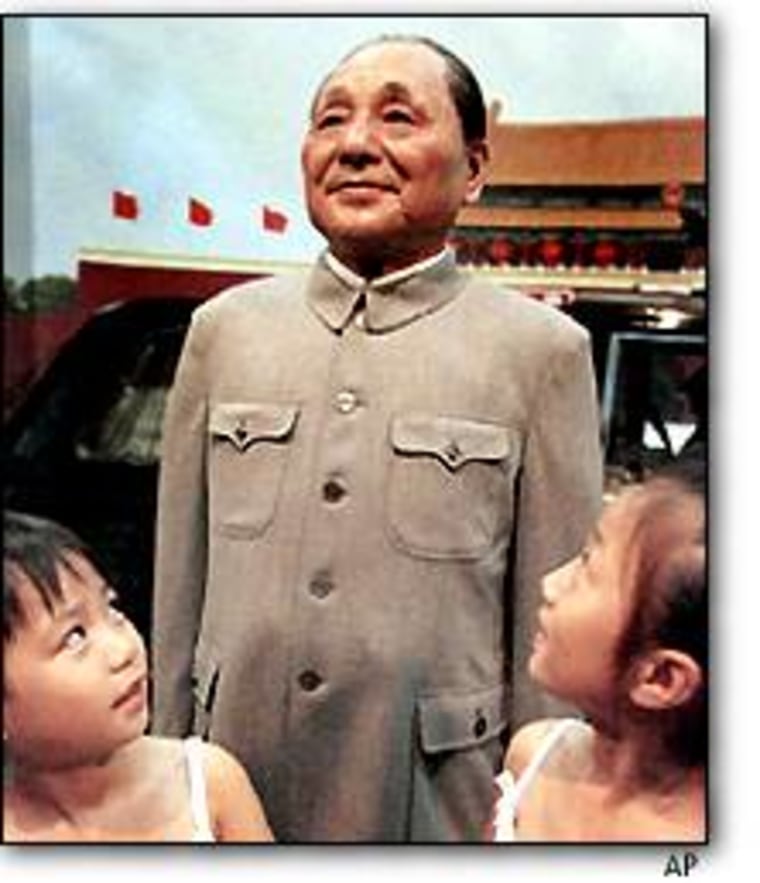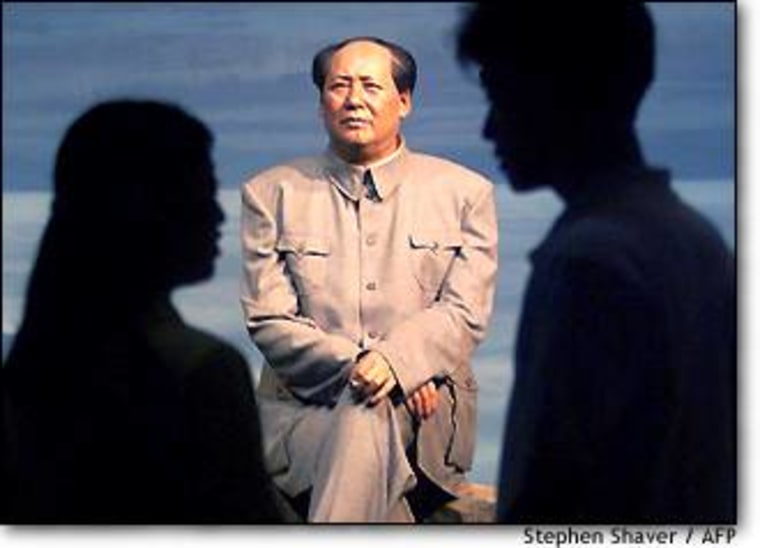The Great Helmsman, Mao Zedong, is there. So is the Great Architect, Deng Xiaoping. The “Great Men of the Century” waxworks exhibit marking the 50th anniversary of communist rule in China glorifies the leadership of Mao and his revolutionary heirs - as do most of the Communist Party’s birthday presents to itself.
Beijing is preparing to celebrate modern China’s Oct. 1, 1949, founding with a stunning makeover for the capital, commemorative exhibits and even an official anniversary Web site.
The city has spent $13.3 billion on 67 major 50th anniversary projects, the state-run Xinhua News Agency said. Although only 20 are now finished, the rest - including a modern new terminal at Beijing’s Capital International Airport - are due to be completed by the big day.
Beijing began its cleanup several years ago with the blessing of President Jiang Zemin, knocking down street markets, clearing out migrants’ shacks and banishing horse carts and pokey yellow minibus taxis from the streets.
In one of the fastest and most extensive urban facelifts ever, fetid waterways were cleared and landscaped in a matter of months; streets repaved and bordered with new sidewalks; entire blocks demolished and replaced with lawns and bounded by ornate, gray-washed walls.
Like most urban renewal projects, something was lost on the way to beautification: Dilapidated but picturesque “hutong” alleyways that used to be home to most residents have been replaced by the type of glassy modern shopping malls and office blocks typical of any big city.
Most of Beijing’s 13 million people will only see the anniversary extravaganza planned for Oct. 1 - a military parade, mass dance performances and fireworks - on television. Just the select few will be invited to watch in person or participate.
Nothing will be allowed to spoil the festivities. Starting Sept. 21, traffic will be restricted and 25 heavily polluting factories will be shut down in an attempt to clear Beijing’s usually smoggy skies.
If the government could dictate the weather, it would: One newspaper report noted that there was only a 1-in-3 chance of rain on Oct. 1.
The city’s pre-anniversary cleanup includes a police roundup of migrants, vagrants and others judged to be unsightly or undesirable. Authorities have also begun preventing the usual hordes of tourists from the provinces from traveling to Beijing.
So the waxworks and other exhibitions showcasing the achievements of the past 50 years are virtually deserted.

Deng, dubbed the Great Architect for having launched the current era of economic reforms, welcomes visitors in a gray wool Mao suit, standing in front of the glossy black Red Flag limousine he used to review the troops during the 35th National Day celebrations in 1984.
“Won’t you have your picture taken with him?” asked a bored worker at the cavernous Revolutionary History Museum.
Mao gazes pensively from a bench atop Mount Lushan before a vista of hazy blue mountains and a sea of clouds. Sun Yat-sen, revered as the father of the revolution, appears along with his wife, Song Qingling. Way in the back, the selfless soldier and model hero Lei Feng stands guard in the dark, an ultraviolet light illuminating the stars.
Although he is today’s torchbearer of the Chinese revolution, Jiang is missing from the exhibit.
According to the state-run Beijing Youth Daily, a figure of him dressed in a black suit and holding aloft an Olympic-style flame had been on display, but fault was found in his likeness.
“There have been a few changes, the hair at his temples are a bit white, so the statue is being fixed,” the newspaper said.
It was unclear who found fault with the waxwork.
Some museum visitors wondered whether Jiang’s inclusion with the “Greats” of the revolution might have struck other party leaders as too akin to a personality cult. Others thought perhaps including a live leader among the dead might have been deemed unlucky.
